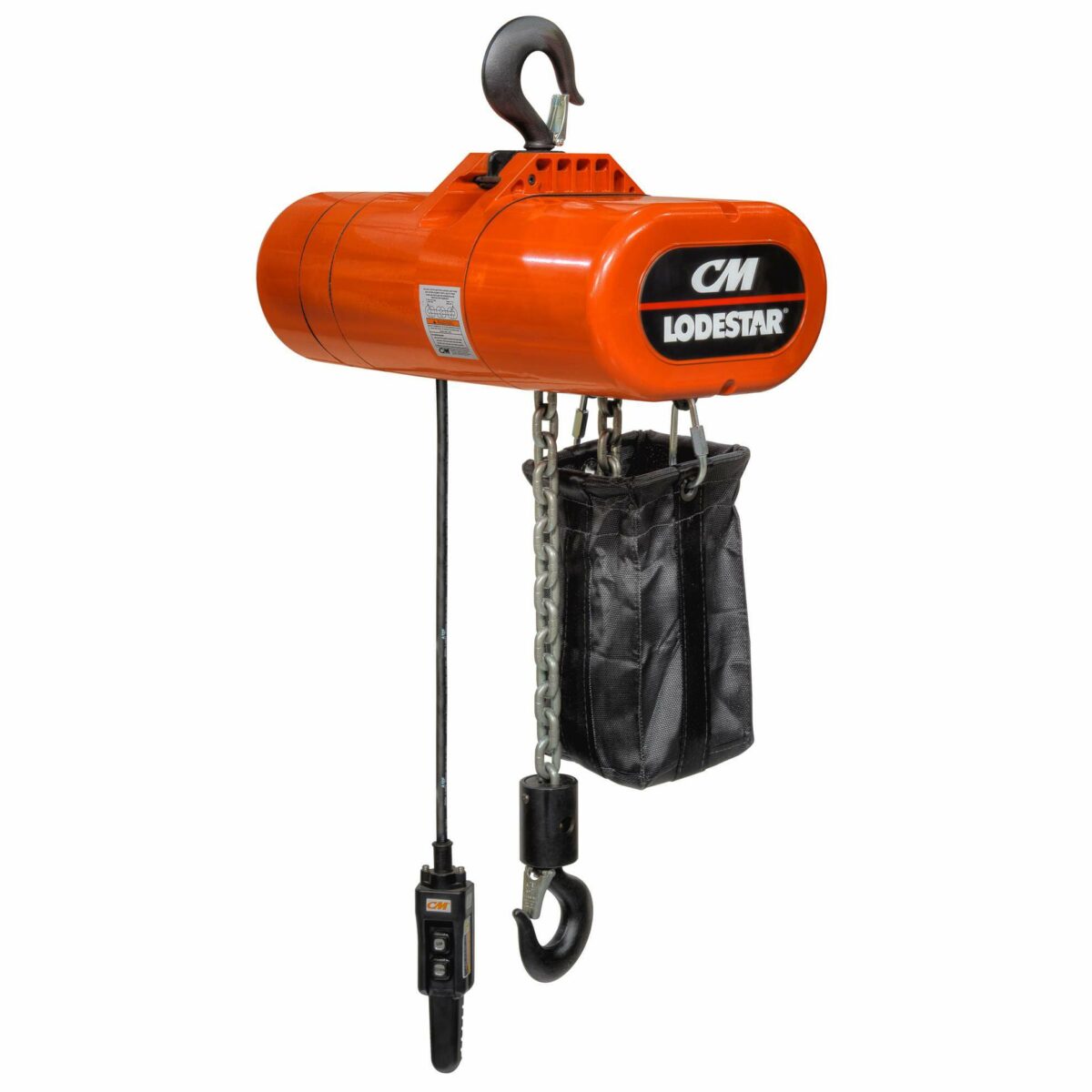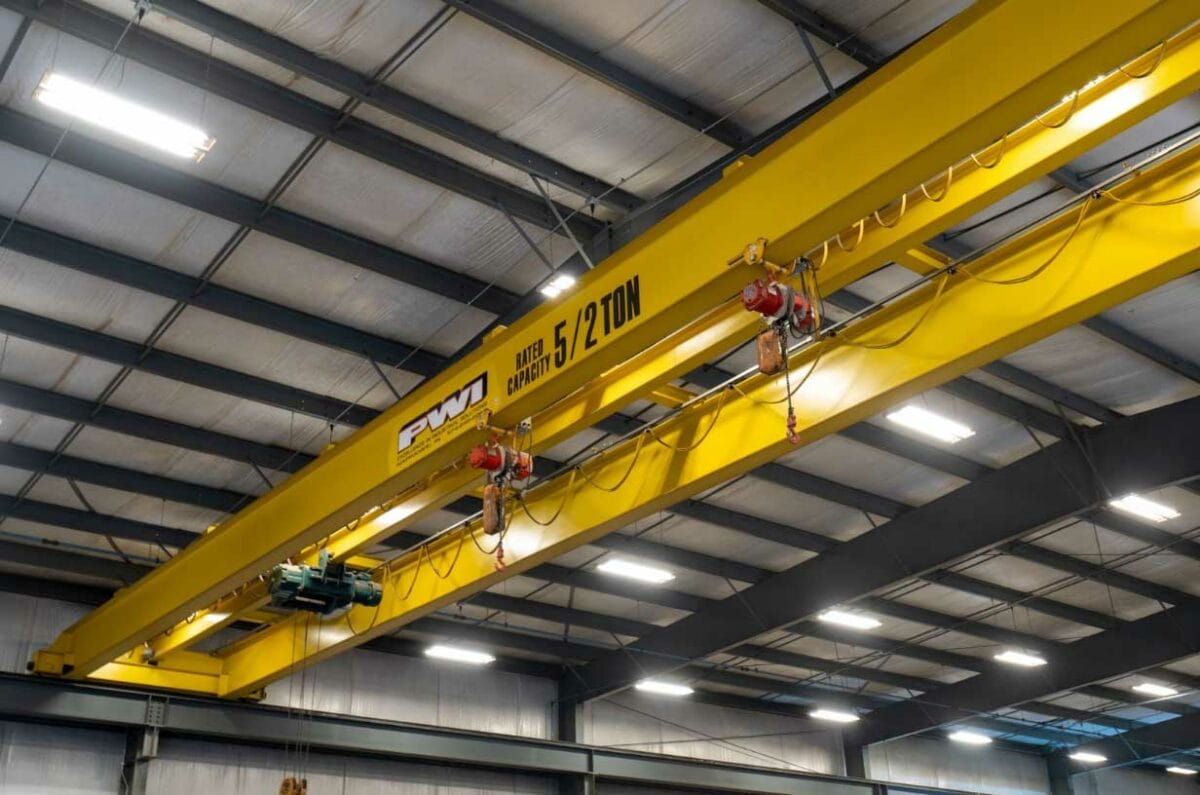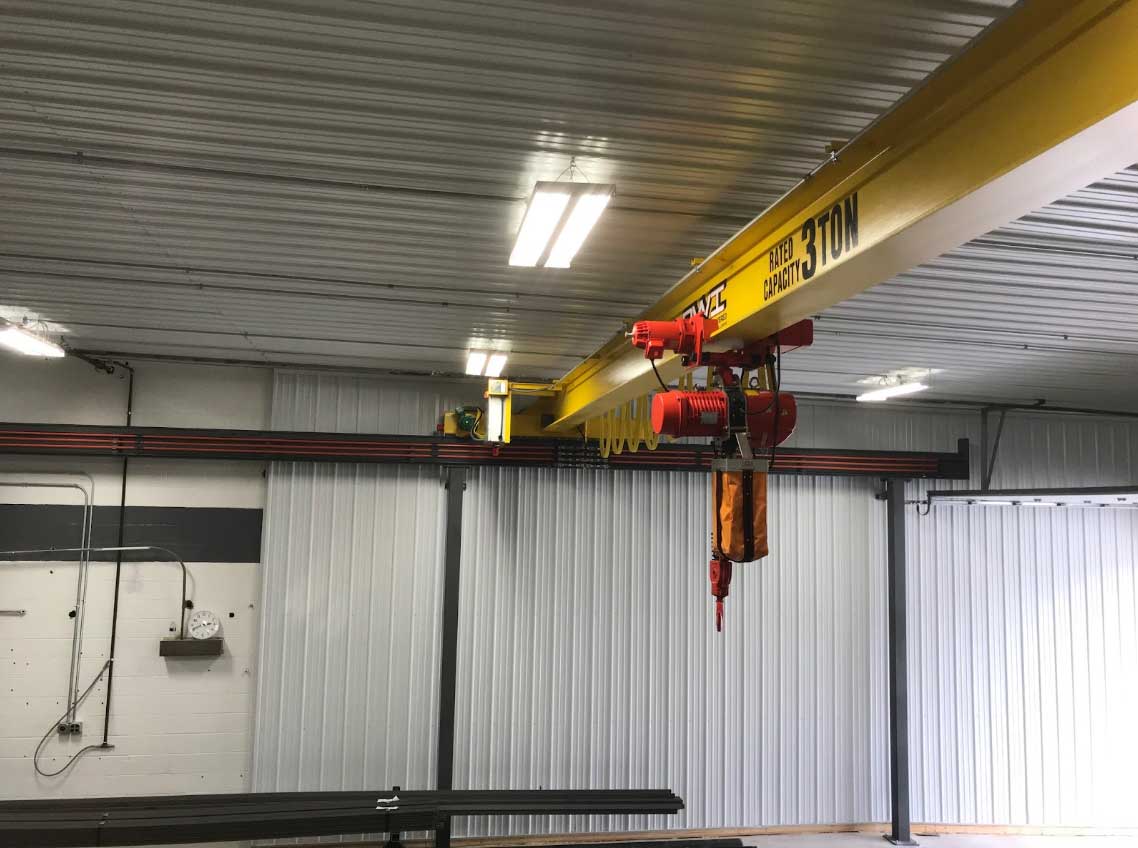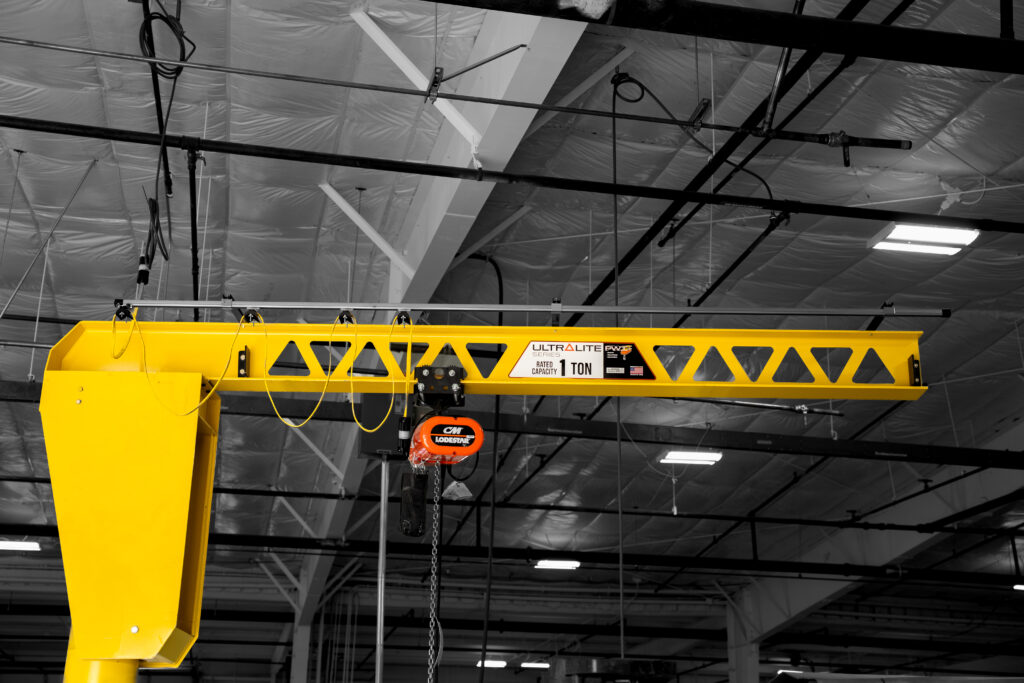Finding the right lifting solution for your workspace can be confusing. Our guide will help you learn and understand the differences between a crane and a hoist so you can make the best decision for your specific site requirements.
Cranes and hoists are used across all construction, manufacturing, and production industries. They can increase both site safety and the capabilities for maneuvering large and heavy objects.
The words crane and hoist are sometimes used interchangeably but they are fundamentally different.
Deciding what lifting solution is appropriate for specific purposes can be difficult. That’s why we have put together this article to help you to understand the differences so you can make an informed and cost-effective decision.
What Is a Hoist?

A hoist is an individualized lifting component that uses a system of pulleys and chain (or wire rope) to lift or lower a load.
Because of the weight that they carry, a hoist must be mounted to something—be it a crane, frame, or another piece of equipment—to fulfill its function safely and efficiently.
Hoists are most commonly used for lifting heavy items regularly or for accurately positioning heavy and/or bulky equipment as part of a manufacturing or maintenance process.
Hoists have several features to improve safety and lifting performance including speed control, multiple lift speeds, limit switches, and load brakes. There are many factors to consider when choosing the most suitable hoist for your specific requirements and the first step will be understanding the differences between a wire rope hoist and chain hoist.
What Is a Crane?

A crane is a system (which includes a hoist) that is used to lift and maneuver heavy loads, such as materials, goods, and equipment. It can be freestanding or attached to a building structure if available.
There are many different types of cranes designed for different uses and lifting requirements. Each is made up of a different combination of parts, but some of the most common components include:
Boom

The terms “boom” and “jib” are sometimes confused, especially when talking about jib cranes where the boom section is referred to as a jib.
The boom is arguably the most recognizable feature of a jib crane. Distinctly visible from a distance, the boom is the arm-like part of the crane that extends out and supports the load. Jib cranes use a boom that resembles an I-beam because of it’s high strength and low weight properties. A trolley and hoist are attached to the boom to provide the lifting function and travel across the length of the beam.
Bridge

The structure of some cranes does not allow them to use a single boom to maneuver the load and instead relies on a parallel structure with supports on either side. Between these runways, a bridge spans the gap and it can move horizontally across the runways. Attaching a trolley and hoist system to the bridge allows the load to be maneuvered anywhere within the area covered by the structure.
Hoist

This is the lifting component of a crane that we mentioned at the beginning of the article.
Trolley

The hoist is usually mounted to a trolley. It provides horizontal movement across the length of the boom (or bridge) to carry the load.
Hook
A hook is typically used to attach to the load.
Column Supports
Almost every crane type requires some form of column support. The only exception is when the existing structure of a building can be used.
What’s Different About a Hoist and a Crane?
A hoist is the crucial component of a crane, without which a crane cannot actually lift anything.
That is because the hoist provides the vertical motion required to raise and lower the load, while a crane adds multiple directions of motion with the use of runways and booms/bridges.
Why Do People Confuse a Hoist and a Crane?
People often confuse the terms hoist and crane or use the term hoist to describe an entire lifting system. The problem is that this does not provide a full or clear description of what is being used. This can then be confusing when finding the correct lifting solution for your workspace.
We can guarantee that there is a hoist or crane system that is perfectly suited to your needs.
At PWI, our expert team is available to help guide you in making the best and most cost-effective solution for your workspace and improve the safety of your workers.
You can speak to one of our experts directly by calling (574) 646-2015. Or if you have already taken a good look through our overhead crane articles and are ready to move forward with your ideal workplace hoisting solution, click here to get a free quote.


